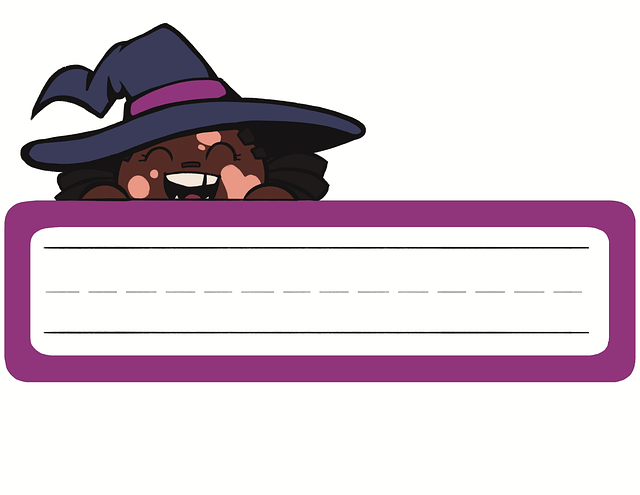Cryotherapy, using liquid nitrogen, is a popular and effective non-invasive method for skin tag removal, offering swift relief with minimal downtime. This treatment, preferred for facial areas, requires professional guidance to avoid complications. While effective, it carries risks like temporary redness and swelling. Alternatives include surgical excision, topical creams, and other local treatments, each with varying advantages and side effects. Cryotherapy is validated by positive patient outcomes and testimonials as a safe, minimal-downtime option for cryotherapy skin tag removal.
“Considering cryo therapy for removing unwanted skin tags on your face? This comprehensive guide explores whether this innovative technique is a safe and effective solution. From understanding the basics of cryotherapy to delving into its mechanism of action, we provide insights into its potential benefits and risks. We also compare it with alternative methods, present real-patient testimonials, and discuss supporting clinical studies, empowering you to make an informed decision about skin tag removal.”
- Understanding Cryotherapy: A Brief Overview
- Skin Tags on Face: Causes and Concerns
- How Cryo Therapy Works for Removing Skin Tags
- Safety Measures: Potential Risks and Side Effects
- Alternative Methods to Consider
- Patient Testimonials and Clinical Studies
Understanding Cryotherapy: A Brief Overview

Cryotherapy, often referred to as cryo or freeze treatment, is a non-invasive procedure that has gained popularity for its effectiveness in removing skin tags and various other skin conditions. This method involves the application of liquid nitrogen, or cryogenic substances, to freeze and destroy targeted skin cells. As a safe and popular skin tag removal method, cryotherapy offers an alternative to more traditional procedures like cutting or burning.
For those seeking skin tag removal Guildford or private skin tag removal Coventry, understanding cryo treatment for skin tags vs laser options is essential. Cryotherapy has been found to be particularly effective on smaller skin tags, providing quick relief with minimal downtime. Unlike lasers, which can cause redness and swelling, cryo treatments typically result in less post-procedure discomfort and faster healing. This brief overview highlights why many people opt for this innovative approach to address unsightly skin tags on the face or other parts of the body.
Skin Tags on Face: Causes and Concerns

Skin tags on the face are a common concern for many individuals, often leading them to seek effective removal methods. These small, soft skin growths, also known as acrochordons, typically appear in areas where skin rubs against itself, such as the neck, armpits, and most commonly, the facial region. While they are usually harmless, some people find them unsightly or uncomfortable, prompting the search for suitable removal techniques.
One method gaining popularity is cryotherapy, a private skin tag removal chelmsford, salford, and newark-on-trent clinic option. This involves freezing the skin tags with liquid nitrogen, which causes them to shrink and eventually fall off. It’s considered a safe and relatively painless procedure when performed by qualified professionals. However, like any treatment, it comes with considerations; excessive freezing or improper application may lead to skin irritation or damage. Therefore, it’s crucial to consult with a specialist who can provide the best guidance based on individual needs, ensuring a successful and safe cryo skin tag removal process.
How Cryo Therapy Works for Removing Skin Tags

Cryo therapy, or cryotherapy, is a non-invasive procedure that has gained popularity as an effective method for removing skin tags. This treatment involves freezing the target skin tags using liquid nitrogen, which disrupts and destroys the blood vessels feeding them. The process is relatively quick, with each session typically lasting between 10 to 30 minutes. After the initial freezing, the skin tag becomes detached from the underlying tissue over a period of a few days or weeks.
The procedure is often carried out in specialized clinics, like the Preston Skin Tag Clinic or Guildford’s leading dermatology centers, where professionals ensure the safety and precision of the cryo therapy. The use of liquid nitrogen allows for targeted freezing without affecting the surrounding healthy skin. While some redness and swelling may occur afterward, it usually subsides within a short time, leaving behind a smooth and clear surface. This method is particularly appealing due to its non-surgical nature, quick recovery time, and effectiveness in removing skin tags from various parts of the face and body.
Safety Measures: Potential Risks and Side Effects

While cryotherapy—or cryo—is considered an effective method for skin tag removal, it’s essential to understand that like any procedure, it comes with potential risks and side effects. Safety measures must be in place to ensure the best outcomes and minimize complications. During a cryo treatment, extreme cold is used to destroy targeted tissue, which can lead to temporary redness, swelling, and discomfort in the treated area. In rare cases, skin tags may not completely disappear or could become more prominent post-treatment, requiring additional procedures for complete removal.
For individuals considering cryotherapy for skin tag removal, it’s crucial to consult with a qualified professional like those found at reputable clinics in Leeds, Gloucester, or Newark-on-Trent. They can provide tailored advice based on the number and size of skin tags, as well as individual health considerations. Additionally, they can guide patients on post-treatment care, including how to manage any adverse reactions, to ensure optimal results and promote faster healing.
Alternative Methods to Consider

While cryotherapy is a popular method for removing skin tags, it’s important to acknowledge that there are alternative approaches available. For those seeking alternatives to cryo therapy side effects long term or considering local options like a Gillingham skin tag clinic or Gloucester skin tag clinic, several other treatments offer promising results.
One such alternative is surgical excision, which involves cutting out the skin tag with a scalpel or laser. This method is typically quick and effective but may leave a small scar. Another option includes topical creams or salves that contain ingredients like salicylic acid or lactic acid, which can help to gradually dissolve skin tags over time. These treatments are generally less invasive but might require more patience for visible results.
Patient Testimonials and Clinical Studies

Many patients seeking effective skin tag removal turn to cryotherapy as a preferred method due to its non-invasive nature and impressive results. Cryotherapy, or freezing off skin tags, has gained popularity as a go-to treatment for facial skin tags. Patient testimonials often highlight the minimal downtime and relatively painless experience during the procedure. Many share their satisfaction with the overall effectiveness of cryo, claiming it successfully removes even stubborn skin tags.
Clinical studies further support the safety and efficacy of this technique. Research suggests that liquid nitrogen applications can effectively eliminate skin tags without significant side effects. The Maidstone Skin Tag Clinic, for instance, has reported promising outcomes in treating facial skin tags using cryotherapy, with many patients noting improvements after just a few sessions. These positive findings reinforce the growing body of evidence that cryo is indeed a safe and viable alternative to traditional skin tag removal methods, even in sensitive areas like the face.
Cryotherapy, or freeze-off treatments, presents a safe and effective method for removing skin tags on the face. By targeting and freezing the tissue, this non-invasive procedure offers a minimal-downtime solution with promising results. While potential risks exist, proper precautions and professional guidance can mitigate these side effects, making cryo therapy a viable option for those seeking to eliminate facial skin tags. As with any medical treatment, understanding both its benefits and drawbacks is crucial before undergoing this procedure.
